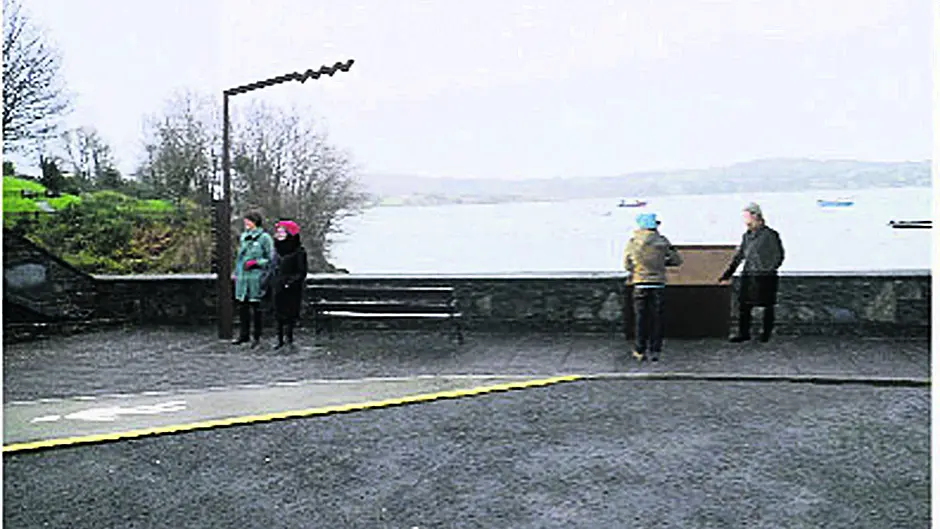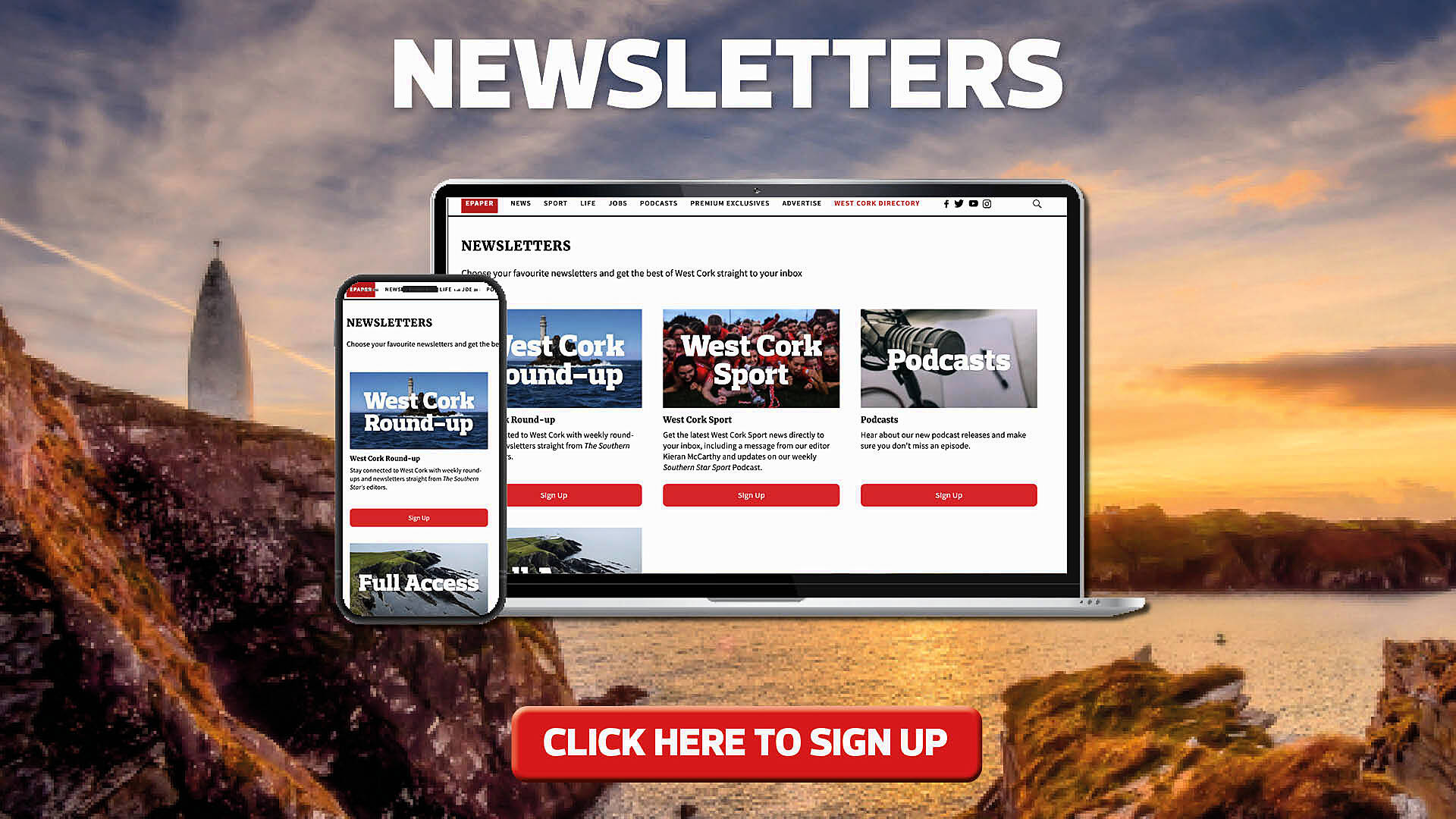Failte Ireland has defended its use of photograph location signs at a number of beauty spots along the Wild Atlantic Way.
FAILTE Ireland has defended its use of photograph location signs at a number of beauty spots along the Wild Atlantic Way.
A number of West Cork residents have contacted The Southern Star recently, to express their disappointment that the signs erected at ‘discovery points’ were put up without any prior knowledge by the general public.
The 14ft signs, which are being erected to allow tourists to take photos and ‘selfies’ for their social media sites, have raised some eyebrows along the coast.
There have also been comments made about the material used in their construction – which is corten steel, the same material which was used on the controversial West Cork Arts Centre in Skibbereen.
‘It is made of iron so it is rusting already,’ one local told The Southern Star, referring to a sign in West Cork which, at that point, was only in situ for a week.
The signs, which are part of a €3.5m initiative to encourage tourists to take photographs and post them online, to boost the marketing of the route, are designed to help people to ‘frame’ their photographs.
They are designed in a right angle with the ‘www’ emblem at one end. They were first installed in Donegal last September when Minister for Transport, Tourism and Sport Michael Ring unveiled the first ‘photo marker’ at Cnoc Fola, in Gaoth Dobhair, Co Donegal.
He said at the time that Fáilte Ireland had been working with local authorities to roll out 188 of these signs before this summer.
In response to a query from The Southern Star, a spokesperson for Failte Ireland defended the use of the steel material.
‘Corten steel can be used unprotected in salt environments and is used in shipping containers for that reason,’ said WAW manager Josephine O’Driscoll, adding: ‘Corten was chosen because it physically and visually responds to its environment in a way that a painted finish would not. It is also lower maintenance. The initial ‘run-off’ is not unusual for Corten. The wash off is a result of the material bedding into its new environment.’
In response to a query over the siting of one of the signs at the public toilets in Schull, Ms O’Driscoll added that, on December 1st last year, a site visit took place in Schull and the current site was chosen by a collective group from Fáilte Ireland and Cork County Council and Hogarth’s (the contract company).
‘The position chosen was a joint decision which offered the best potential to visitors arriving and accessing the islands from here. A different site had initially been chosen but this was discounted at site visit as it had implications for the business at the pier and would also have been a potential health and safety risk for the visitor.’
The WAW manager continued, saying that ‘Schull Harbour is one of the 189 Discovery/Embarkation Points along the Wild Atlantic Way. The land is owned by Cork County Council and does not require planning permission to erect the Photo Points and Interpretation Panels. Where we have erected Photo Points and Interpretation Panels on private lands, we have consulted with the land owner, ie Inish Beg.’
She also added that FAilte Ireland has ‘had some very positive comments on the Photo Points and Interpretation Panels in West Cork from Tom McCarthy, Community Group Schull, Siobhan Burke, Sheep’s Head Way and Jim Kennedy, Atlantic Sea Kayaking.’
In Galway, there was a huge outcry when some of the sign were erected along particularly scenic landscapes, including one at Omey Strand in Connemara. Heather Greer set up a petition to get the ‘steel monstrosity’ taken down. By the end of February, she had secured 500 signatures.
In Kerry, the signs drew the same reaction, with Ballyferriter writer Felicity Hayes McCoy telling Radio Kerry that the signs were ‘in the way’.









